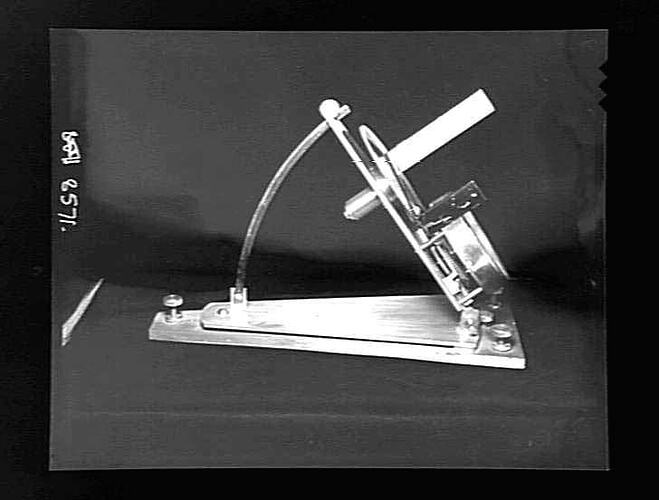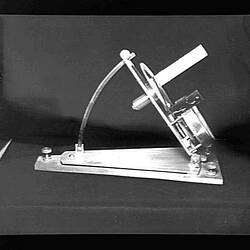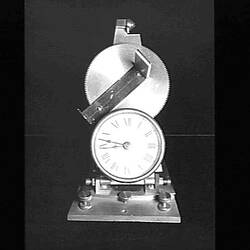Summary
Sunclock or heliochronometer, designed and made by William Ernest Cooke, Government Astronomer of New South Wales, about 1922.
The sunclock allowed quite accurate reading of the time through careful adjustment for latitude, time of year and standard time. The arms are moved so that a beam of sunlight passes through the hole in one arm onto the line on the other. This moves the hands of the clock to show Standard Time.
Cooke originally designed a similar sunclock around 1907, when Government Astronomer of Western Australia. This improved model was designed in about 1922, patents obtained from 1923, and a company, Cooke's Sunclocks Limited, formed in 1926 to manufacture and sell the clocks. Several hundred clocks were sold in Australia and a few overseas, but the cost of marketing and distribution proved too great and production ceased after a few years.
Physical Description
Brass, hands of clock are connected by train of gears to 2 arms, arms are moved so that a beam of sun passes through a hole in one arm onto a scale on the other and this moves hands to standard time.
More Information
-
Collecting Areas
-
Acquisition Information
Loan & Subsequent Bequest from Mr John Askew, 30 May 1933
-
Inventor
Mr William Ernest Cooke, Sydney, Greater Sydney, New South Wales, Australia, circa 1922
There is extensive documentation in the Supplementary File. -
Manufacturer
Cooke's Sunclocks Limited, 14 Martin Place, Sydney, New South Wales, Australia, circa 1922
-
Inscriptions
Dial marked 'W. E. Cooke's Sunclock patent applied for'
-
Classification
-
Category
-
Discipline
-
Type of item
-
Overall Dimensions
26 cm (Length), 11 cm (Width), 20 cm (Height)
-
Dimensions
25.7 cm (Length), 11.3 cm (Width), 18 cm (Height)
Measurement From Conservation. Measuring Method: Maximum dimensions
-
Keywords


